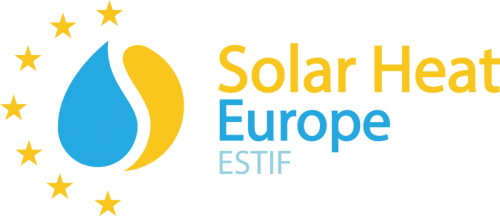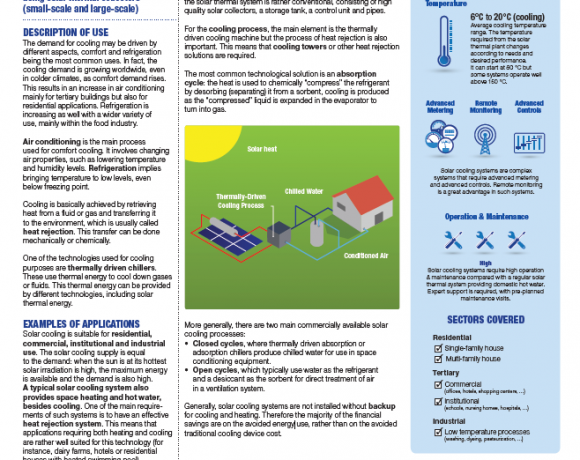The demand for cooling may be driven by different aspects, comfort and refrigeration being the most common uses. In fact, the cooling demand is growing worldwide, even in colder climates, as comfort demand rises. This results in an increase in air conditioning mainly for tertiary buildings but also for residential applications. Refrigeration is increasing as well with a wider variety of use, mainly within the food industry. Read More...
Factsheets
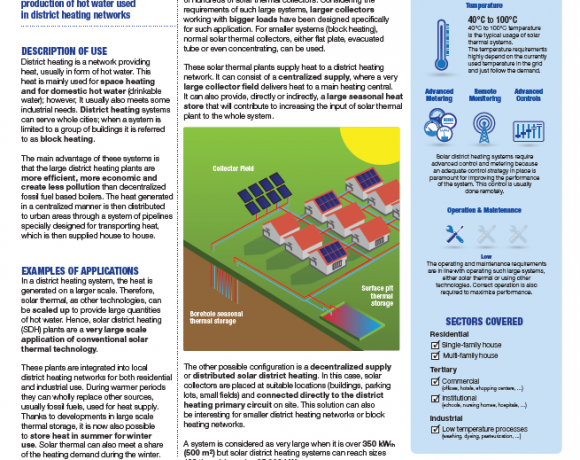
Solar District Heating
District heating is a network providing heat, usually in form of hot water. This heat is mainly used for space heating and for domestic hot water (drinkable water); however, It usually also meets some industrial needs. District heating systems can serve whole cities; when a system is limited to a group of buildings it is referred to as block heating. The main advantage of these systems is that the large district heating plants are more efficient, more economic and create less pollution than decentralized fossil fuel based boilers. Read More...
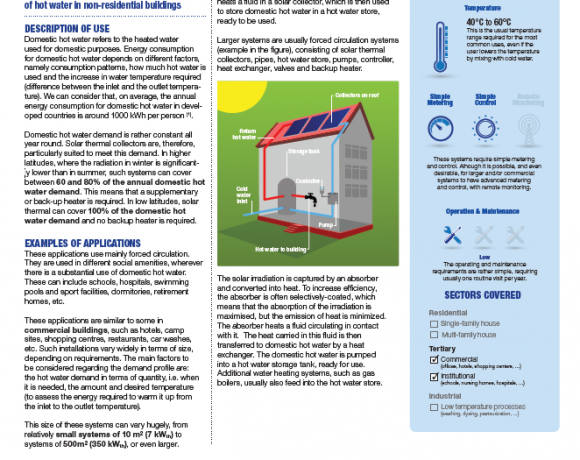
Domestic Water Heaters for Social Amenities
Domestic hot water refers to the heated water used for domestic purposes. Energy consumption for domestic hot water depends on different factors, namely consumption patterns, how much hot water is used and the increase in water temperature required (difference between the inlet and the outlet temperature). We can consider that, on average, the annual energy consumption for domestic hot water in developed countries is around 1000 kWh per person (1). Read More...
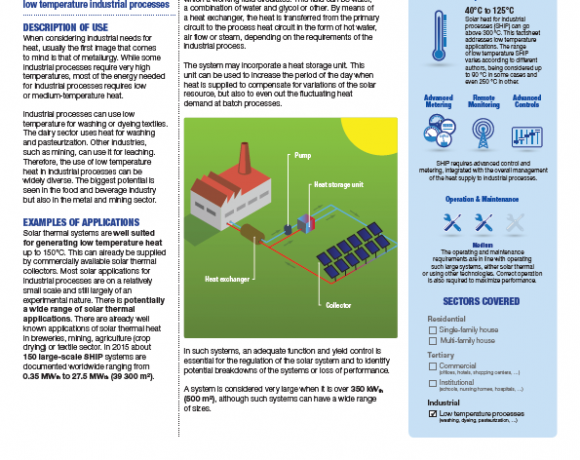
Solar Heat for Industrial Process
When considering industrial needs for heat, usually the first image that comes to mind is that of metallurgy. While some industrial processes require very high temperatures, most of the energy needed for industrial processes requires low or medium-temperature heat. Industrial processes can use low temperature for washing or dyeing textiles. The dairy sector uses heat for washing and pasteurization. Read More...
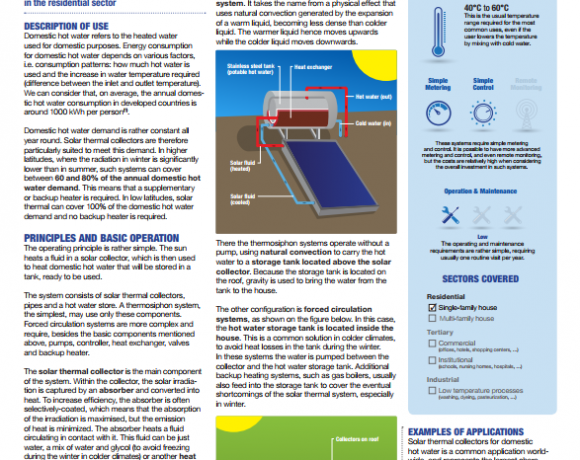
Domestic Hot Water for Single & Multi-Family Houses
Domestic hot water refers to the heated water used for domestic purposes. Energy consumption for domestic hot water depends on various factors, i.e. consumption patterns: how much hot water is used and the increase in water temperature required (difference between the inlet and outlet temperature). We can consider that, on average, the annual domestic hot water consumption in developed countries is around 1000 kWh per person(1). Read More...
